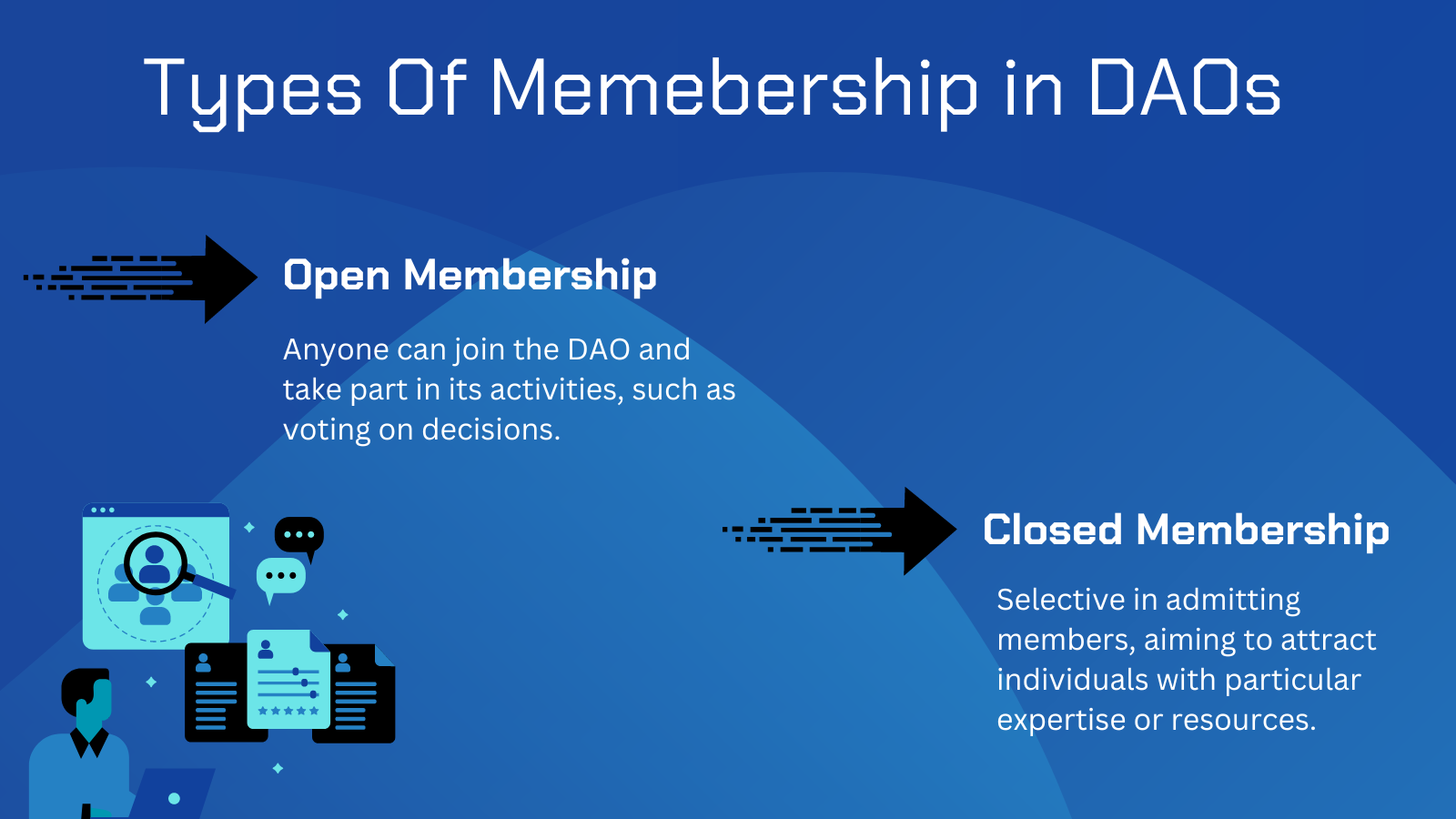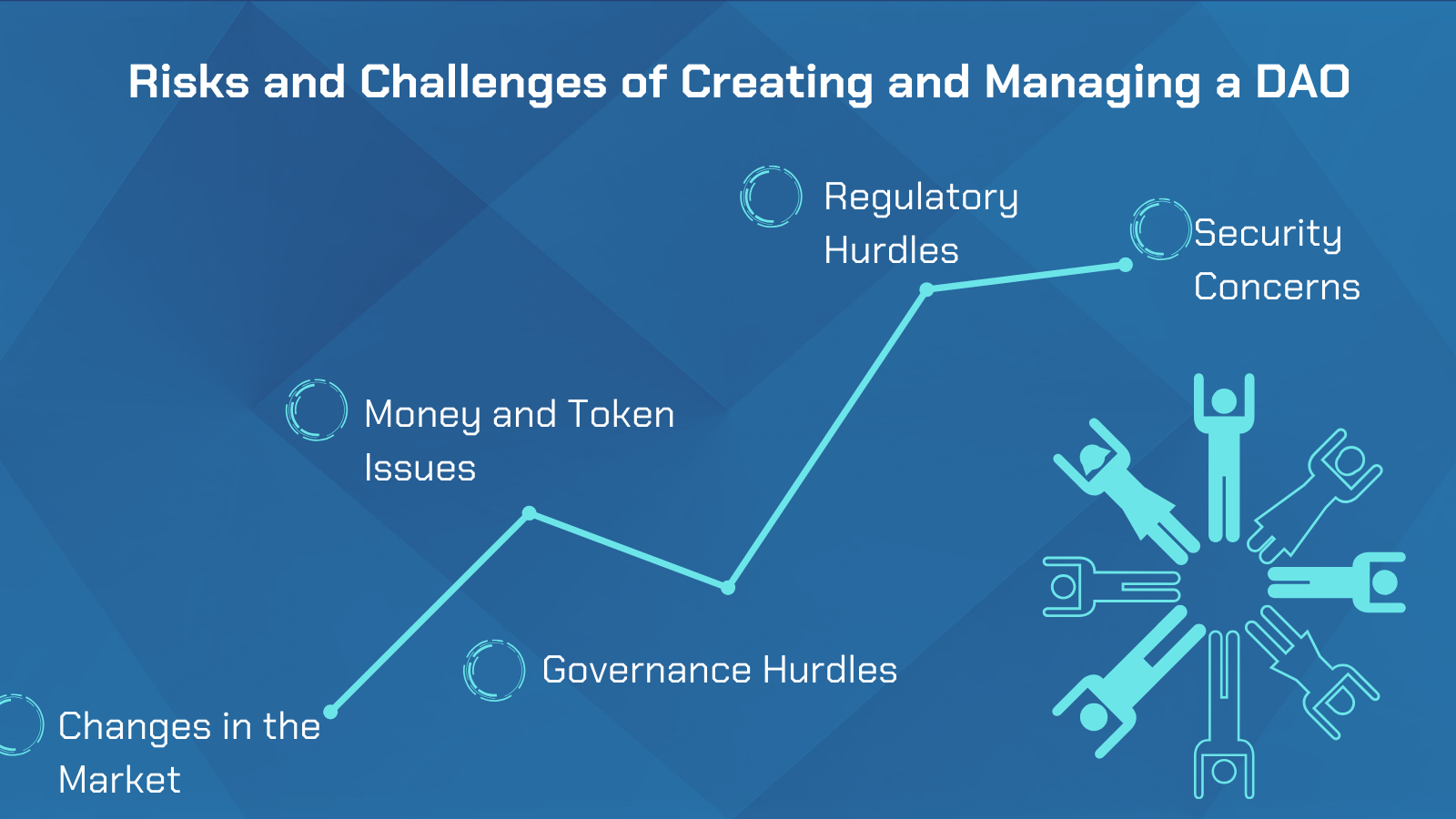Decentralized Autonomous Organizations (DAOs) have emerged as unique frameworks for managing projects and communities in the digital era. Operating on smart contracts, these organizations offer a decentralized approach to decision-making. In DAOs, members determine the trajectory of the organization.
However, navigating the complexities of managing a DAO requires careful consideration of various factors. In this article, we'll explore the key stages involved in choosing the right organizational structure for a DAO.
Defining Goals and Management Structure
Before establishing a DAO, it's important to define its goals and objectives. Whether it's fundraising, investments, asset management, or community building, the objectives shape the structure, management mechanisms, and decision-making processes of the DAO.
The management structure of a DAO can take different forms, such as democratic, meritocratic, or a blend of both.
Management Structure of a DAO
In a democratic governance structure, each participant in the DAO is afforded an equal vote in decision-making processes. This means that regardless of the number of tokens or shares held by an individual, their voting power remains the same.
For example, if there are 100 participants in a DAO, each participant would have one vote.
Conversely, a meritocratic governance structure assigns decision-making power based on the number of tokens or shares owned by each participant. Participants with a larger stake in the DAO, as indicated by their token ownership, will have greater influence over decisions.

For instance, if one participant holds 50% of the tokens, their vote carries more weight than the votes of others. This system rewards those who have made significant investments in the DAO but may lead to the centralization of power and resources in the hands of a few.
Some DAOs opt for a hybrid approach, blending elements of both democratic and meritocratic governance structures. For example, they may grant each participant one vote while also providing additional voting power to those with a larger token stake. This hybrid model seeks to balance inclusivity and fairness with recognition of significant contributions to the DAO.
Examples of Management Models
Aragon Network exemplifies a DAO with a democratic governance structure, where each participant's vote holds equal weight. In contrast, MakerDAO employs a meritocratic governance model, where decision-making power is proportionate to token ownership.
Choosing the appropriate governance structure depends on the specific goals and circumstances of the DAO.
A meritocratic system may be beneficial for rewarding active contributors and aligning incentives, but it also raises concerns about centralization and inequality.
Conversely, a democratic system enhances inclusivity and equality but may face challenges in effectively incentivizing participation and rewarding contributions. Ultimately, the optimal governance structure for a DAO should reflect its values, objectives, and commitment to decentralization.
Types of Membership in DAOs

In establishing a DAO, a crucial decision involves selecting the right membership structure. Typically, DAOs opt for either open or closed membership systems to meet specific organizational goals and requirements.
- Open Membership
Open membership allows unrestricted participation. Anyone can join the DAO and take part in its activities, such as voting on decisions. This inclusive model is commonly observed in DAOs dedicated to developing open-source software or increasing community-driven initiatives.
Participants are not subject to strict entry criteria, promoting broad engagement and collaboration within the DAO.
Some examples of DAOs with Open membership include:
-
MetaCartel Ventures - It is an investment-focused DAO supporting early-stage projects on the Ethereum blockchain. Membership is open to individuals who receive invitations from current members or successfully undergo an approval process.
-
Flamingo DAO - It specializes in NFT collections and infrastructure. Flamingo DAO allows individuals to join by purchasing a specific amount of tokens (FLM) and obtaining approval from existing members.
-
Closed Membership
In contrast, closed membership includes imposing specific criteria for joining the DAO, such as educational qualifications, professional experience, or financial capability.
DAOs with closed membership are selective in admitting members, aiming to attract individuals possessing particular expertise or resources relevant to the organization's objectives. This model is seen more in investment-focused DAOs and other initiatives that prioritize the contributions of qualified and experienced participants.
A prominent example of a DAO with closed membership is The LAO.
- The LAO - A DAO investing in blockchain and cryptocurrency startups. Prospective members are required to complete an application process and secure approval from current members before joining the organization.
Determining Tokenomics for the DAO
The third stage involves shaping the token economy, or tokenomics, of the DAO. Tokenomics refers to how tokens are utilized within the DAO's ecosystem, including distribution, voting rights, privileges, and issuance mechanisms.
Token Use Cases
-
Utility Tokens - They are used for purchasing products/services within the DAO or paying fees.
-
Security Tokens - These are digital equivalents of securities, offering dividends and voting rights.
-
Voting Tokens - They are used for decision-making within the DAO, with voting power tied to token holdings.
-
Governance Tokens - These tokens enable voting on DAO rule changes and managerial appointments.
-
Stablecoins - These are tokens pegged to fiat currencies or stable assets, providing stability for transactions within the DAO.
When determining tokenomics, considerations include how tokens are distributed, voting mechanisms, and the privileges associated with token ownership. These factors shape the token economy and impact the DAO's functionality and governance. Risks and Challenges of Creating and Managing a DAO
When setting up and running your DAO on the blockchain, there are plenty of benefits to enjoy like transparency and cost reduction. But, like any venture, there are risks to watch out for.

1. Security Concerns
Hackers and scammers might target your DAO, aiming to steal funds or disturb your smart contracts. To stay safe, one needs a good security infrastructure and a skilled team of developers.
2. Regulatory Hurdles
Blockchain and cryptocurrencies still sit in a grey area in many places. A DAO might find regulatory hurdles that could lead to fines or even bans. It's crucial to understand the legal landscape and get some legal advice to avoid these risks.
3. Governance Hurdles
Without a central authority, decision-making in a DAO can get difficult. The absence of trust and slow voting can slow things down and decline a DAO's effectiveness.
4. Money and Token Issues
If you don't plan out how your tokens will work, you could run into problems. For example, the value of your tokens might go up and down a lot, or some people might end up having too much power to make decisions.
5. Changes in the Market
The prices of cryptocurrencies can change a lot, which can affect your plans. Also, some people might try to manipulate the market, causing problems for your DAO and everyone involved.
How to Make a Successful DAO
Even with these challenges, a well-run DAO can be a big help. Here's how to make sure yours is successful -
-
Choose a Reliable Blockchain: Use a good platform to build your DAO. It's like laying a strong foundation for a building.
-
Set Clear Rules: Decide how decisions will be made and what to do if people don't agree. Clear rules can help prevent conflicts.
-
Plan Your Finances: Think ahead about how your tokens will work and how they'll be used. It's important to have a solid plan for managing your money.
-
Stay Safe and Dependable: Invest in good security measures to keep your DAO safe from hackers and other threats. Regular check-ups can also help ensure everything is running smoothly.
Creating and managing a DAO can be a great way to work together and achieve common goals. Just be prepared for challenges and make sure to plan carefully to increase your chances of success.
Wrapping Up
Decentralized Autonomous Organizations represent a shift in organizational dynamics, offering transparency, efficiency, and autonomy. However, navigating the complexities of DAO creation and management requires foresight, diligence, and meticulous planning.
With clear goals, effective governance mechanisms, and robust tokenomics, DAOs can unlock their full potential.




评论 (0)